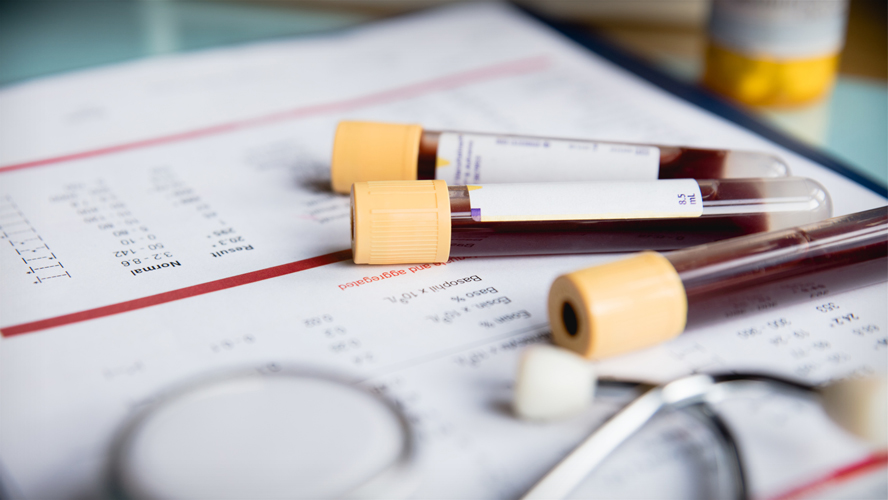
Researchers from Princess Margaret Cancer Centre (PM) have made significant strides in the early detection and prediction of cervical cancer relapse by validating human papillomavirus (HPV) circulating tumour DNA (ctDNA) as a marker to identify patients with a high chance of disease relapse.
Despite effective treatments such as chemoradiation, approximately 30 to 40% of cervical cancer patients experience a relapse of the disease. Early detection of relapse is critical for effectively managing and treating cancer; however, common clinical factors—such as cancer stage—are often inadequate predictors of relapse due to factors like the unique and dynamic nature of cancer tumours.
HPV is a virus that is known to cause cervical cancer. When tumour cells undergo changes or die, they release fragments of DNA into the bloodstream. By examining the genetic material associated with HPV (HPV ctDNA), researchers can assess the progression of cervical cancer and identify patients who are at high risk of relapse.
A team led by Dr. Kathy Han, a Clinician Scientist at PM, set out to validate the effectiveness of measuring HPV ctDNA as a method for early detection of cervical cancer relapse. PM researchers Dr. Jinfeng Zou, Scientific Associate, Zhen Zhao, Research Technician, and Dr. Scott Bratman, Senior Scientist, as well as Dr. Eric Leung, Radiation Oncologist at Sunnybrook Health Sciences Center, are co-authors of this study.
“By examining blood samples from patients with cervical cancer following treatment with chemoradiation, we explored the relationship between the presence of HPV ctDNA and progression-free survival (PFS),” explains Dr. Han. “PFS is a key measure that indicates the duration of time during and after treatment when a patient is without signs of disease progression. Shorter PFS is reflective of a higher risk of disease relapse.”
Researchers followed patients for approximately two years post-treatment and used advanced next-generation DNA sequencing techniques to analyze their blood samples. Results showed that patients with detectable HPV ctDNA post-chemoradiation had shorter PFS compared to those who had undetectable levels.
“These results have major implications for patients,” notes Dr. Han. “The ability to identify those at high risk of relapse at such early stages opens the door for more personalized treatment plans with more aggressive interventions when necessary. This could significantly improve the outcomes for individuals with virus-related cancers.”
As cervical cancer remains a prevalent health issue, this research represents a significant step forward in the ongoing efforts to enhance detection methods and ultimately, improve patient outcomes. These findings are poised to impact clinical practices and may serve as a foundation for future studies exploring tailored treatment strategies based on HPV ctDNA testing.
This work was supported by The Princess Margaret Cancer Foundation, Cancer Research Society, Ontario Institute for Cancer Research, the BMO Financial Group Chair in Precision Cancer Genomics, and the Dr. Mariano Elia Chair in Head & Neck Cancer Research at UHN and the University of Toronto. Dr. Kathy Han is an Associate Professor in the Department of Radiation Oncology at the University of Toronto. Dr. Bratman is also an Associate Professor in the Departments of Medical Biophysics and Radiation Oncology at the University of Toronto.
Disclosures of Potential Conflicts of Interest
Dr. Kathy Han is an advisor for AstraZeneca and has a patent pending on the detection of HPV circulating tumour DNA. A full list of disclosed potential conflicts of interest can be found in the article.
Han K, Zou J, Zhao Z, Baskurt Z, Zheng Y, Barnes E, Croke J, Ferguson SE, Fyles A, Gien L, Gladwish A, Lecavalier-Barsoum M, Lheureux S, Lukovic J, Mackay H, Marchand EL, Metser U, Milosevic M, Taggar AS, Bratman SV, Leung E. Clinical Validation of Human Papilloma Virus Circulating Tumor DNA for Early Detection of Residual Disease After Chemoradiation in Cervical Cancer. J Clin Oncol. 2023 Nov 16:JCO2300954. doi: 10.1200/JCO.23.00954.

Blood samples are a non-invasive method of accessing genetic material released by tumour cells when they undergo changes or die such as HPV ctDNA.




